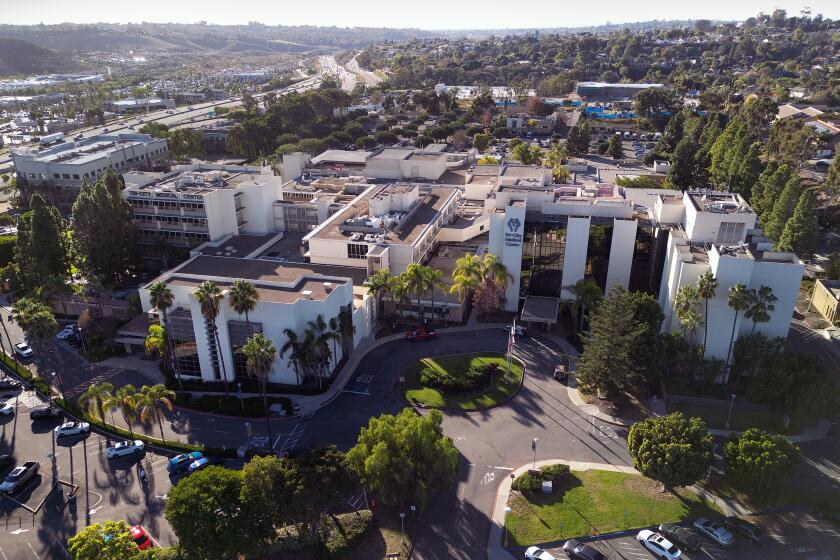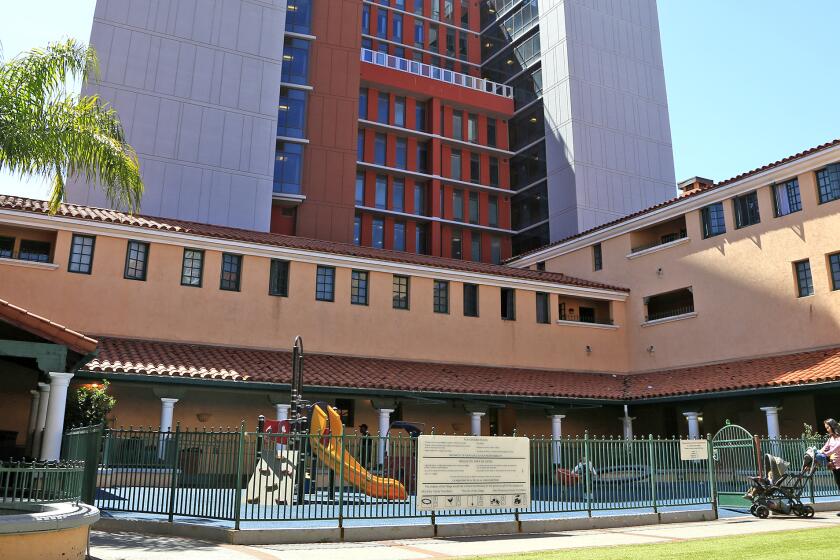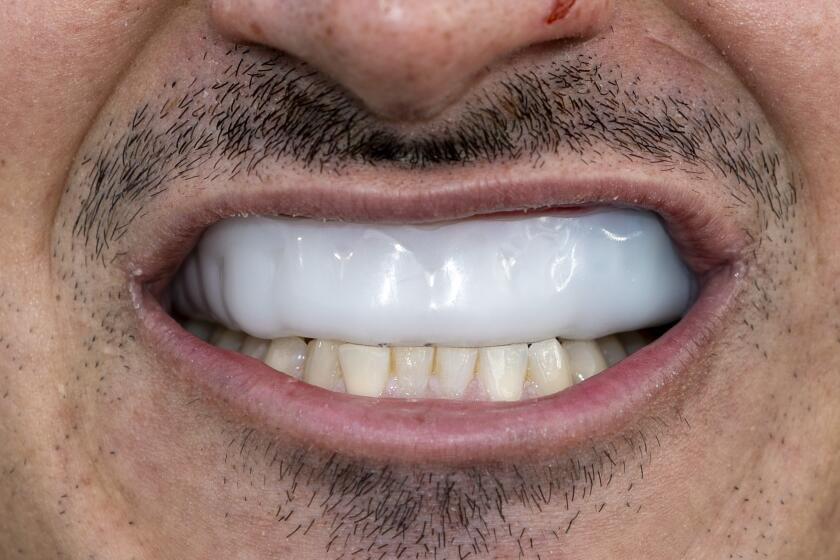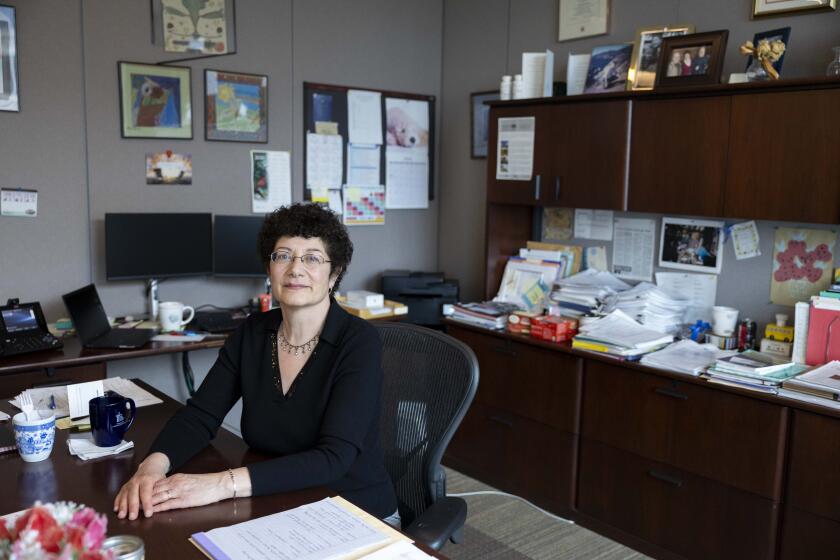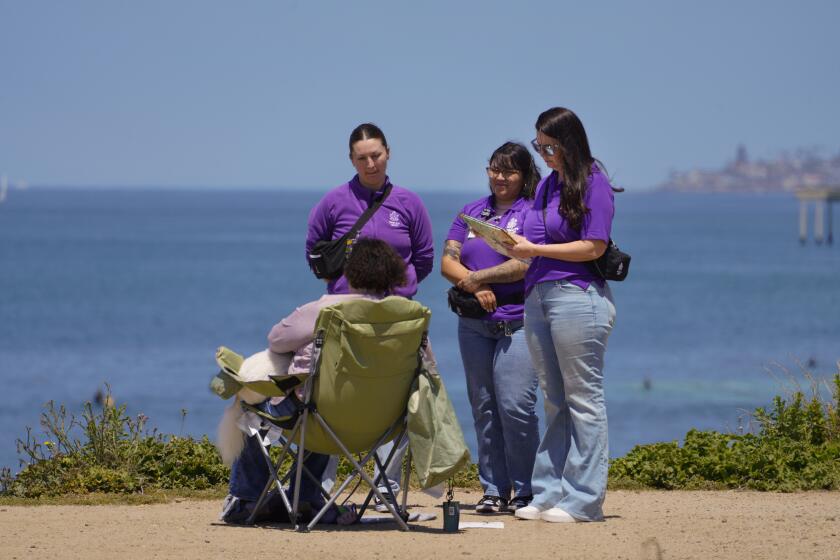San Diego works to prevent measles outbreak as spread of disease continues worldwide
San Diego County has not recorded a single measles case since 2017, despite a growing set of international outbreaks that has infections appearing just up the coast in Los Angeles.
But with the nation tallying its largest number of measles cases since 1994, experts say it might just be inevitable that patients will start turning up in San Diego with the distinctive red rash that signals the presence of a disease that seemed to be extinct just 19 years ago.
Dr. Eric McDonald, medical director of the county’s Epidemiology and Immunization Services Branch, said there is only so much that can be done in a region with more than 3 million residents, many who travel to countries with massive measles outbreaks underway.
The health department, he said, is routinely notified every time a local resident is on a plane with a fellow traveler who turns out to have measles. Eight such cases, he said, have surfaced in 2019 with 26 more suspected cases referred by local doctors.
While none of those has tested positive to date, simple probability dictates that, eventually, someone who is not vaccinated, or who has less immunity than they think, will come home with a measles infection.
“We do follow up on every single one of of those (travel) cases and make sure that they’re all immune but, sooner or later, one of those is going to turn out not to be immune, or we’re going to find out about the flight too late to do anything about it, and one of those people could easily develop measles,” McDonald said. “I hate to say it’s just a matter of when, but certainly we’re planning that way.”
International travel has been the clear theme of the growing number of measles outbreaks in 2019. On the East Coast, unvaccinated visitors to Israel have returned with infections that have spread rapidly within New York’s Orthodox Jewish community.
California, which announced Thursday that its measles total has now reached 38, including six in Los Angeles, has seen cases from a wider geographic area. Nationwide, the U.S. Centers for Disease Control and Prevention said Wednesday that 695 measles cases have been detected. According to CDC records, that’s the highest number recorded since 1994, when 963 cases were reported.
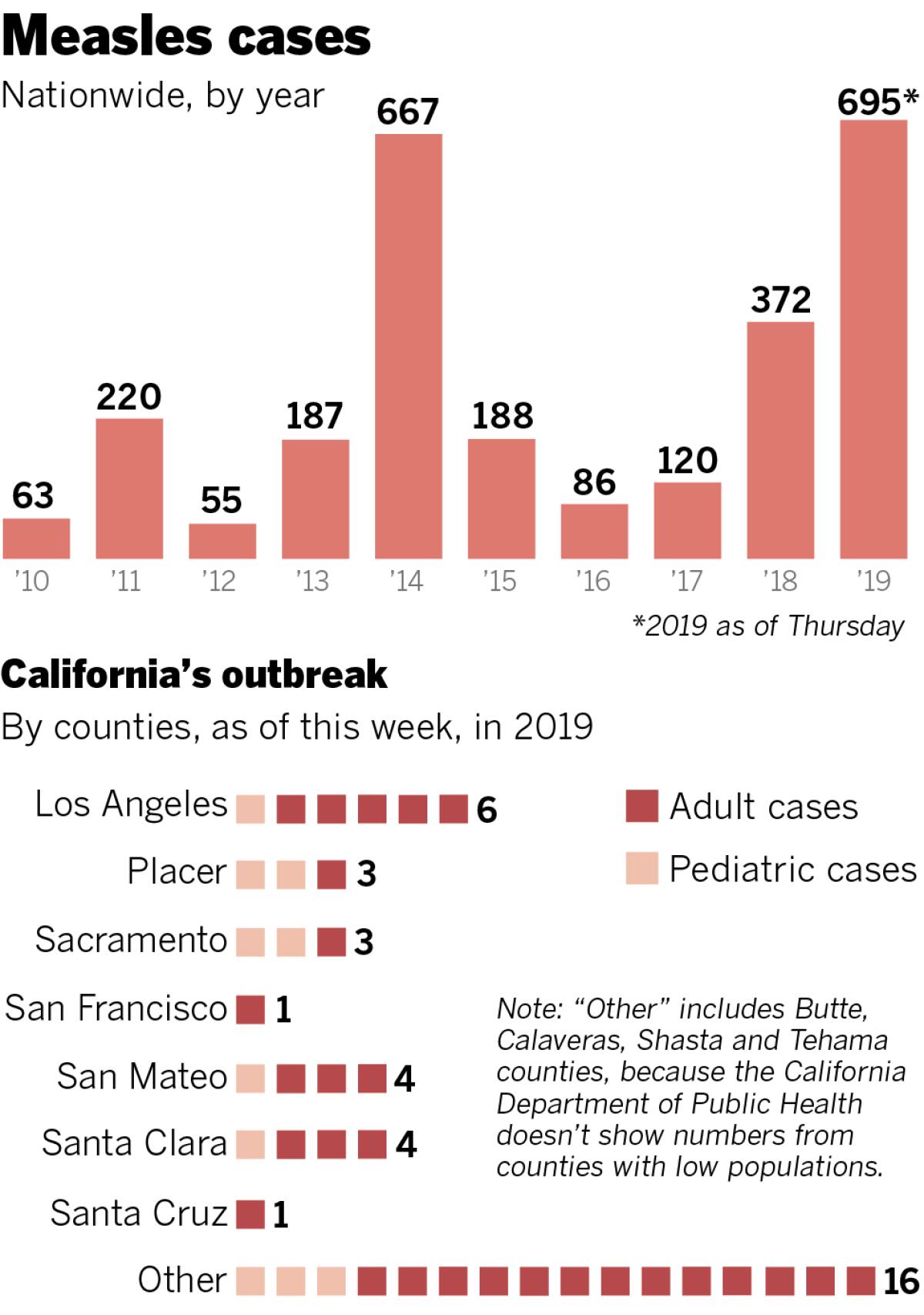
The highly contagious disease usually starts with a fever and progresses toward a rash that begins at the hairline moving into the face and upper neck, gradually progressing outward and reaching the hands and feet. About 30 percent of cases face additional medical problems that range from diarrhea to pneumonia, the most common fatal complication. Very rarely, measles infection causes permanent brain damage, seizures and death.
According to the California Department of Public Health, all but two of the state’s 38 cases were linked to international travel. Fourteen visited foreign countries and 22 became infected by a person who had traveled internationally, the CDPH said in an email. Five visited the Philippines and five visited Ukraine while single travel cases were contracted in India, Thailand, Thailand and Cambodia and Vietnam.
According to the World Health Organization, all of those countries have ongoing measles outbreaks numbering in the thousands. San Diego County, census records show, has more than 150,000 Filipino residents, making the community one of the largest in the region.
In late March a letter from Dr. Wilma Wooten, the county’s public health officer, went out to Filipino community organizations noting that the Philippine Department of Health “has reported 20,308 measles cases, including 301 deaths, from Jan. 1 to Mar. 12, 2019.”
With “over half of the measles cases under five years old,” Wooten recommends that even children age six to 11 months receive a measles, mumps and rubella (MMR) vaccine if they’re traveling to the Philippines or other countries where measles is circulating. Local families expecting visitors from the Philippines, the letter continues, should make sure their loved ones are up-to-date with their vaccinations before leaving for the United States.
Anyone who develops a fever, and especially a rash, within three weeks of having been in the Philippines, Wooten’s letter states, should seek medical attention but not before calling ahead to mention the possibility of measles “so that appropriate infection control steps can be taken.”
Joseph Mazares, president and chair of the Council of Philippine American Organizations, said in an email Thursday afternoon that the coalition supports the county’s call for increased vigilance but pushed back a bit on the notion that the Filipino community needs an increased public health focus.
“While we appreciate Dr. Wooten’s advisory given San Diego’s large domestic and immigrant Filipino and Filipino American community, I personally don’t think our concern is any more concerning than what is being experienced across the country and the world,” Mazares said.
It’s clear, however, that the current international spread of measles has become severe in America, a country that, due to widespread use of the MMR vaccine, saw the number of measles cases dramatically decrease. Vaccine reluctance, however, has pushed down vaccination rates, leading to an outbreak at Disneyland in late 2014 and early 2015 that spawned 147 cases nationwide.
The U.S. Centers for Disease Control and Prevention was unable to confirm the source of the Disneyland outbreak, but genetic testing did show that the viruses responsible for the contagion were the same that caused a large outbreak in the Philippines in 2014, causing the public health agency to conclude that the outbreak “likely started from a traveler who became infected overseas with measles, then visited the amusement park while infected.”
Low vaccination rates in schools have become a perennial concern and the Disneyland outbreak was the impetus for a new law that removed previous allowances for parents to file “personal belief exemptions” that allowed unvaccinated children to be enrolled in schools. With that option off the table, many have found doctors willing to write medical exemptions, certifying that it’s unsafe for children to be vaccinated. There has been much talk, however, that these exemptions are overused and a new bill in the legislature co-authored by South County state Rep. Lorena Gonzalez seeks to strengthen oversight of medical exemptions.
While schools with low vaccination rates tend to be the focus of public ire when a public health crisis for a vaccine-preventable disease erupts, McDonald said that’s only part of the story where measles is concerned. He noted that the first to be vaccinated when the measles vaccine was introduced in the 1960s received a less-effective version. And, those vaccinated prior to the late 1980s routinely received only one dose rather than the two that are now a routine part of the childhood vaccination schedule.
“People who are, you know, 40, 50, 60 years old may have had inadequate vaccination or only one dose, and when they go overseas, they can end up bringing it back because they’re under immunized and they don’t realize it,” McDonald said.
For those who would like to know whether they truly have the measles immunity they think they do, doctors can order a “titer” test to verify the presence of measles antibodies -- the bits of the virus that the immune system uses to detect an infection -- in the bloodstream.
“Particularly for anybody who’s going to the Philippines or a country that is having a large outbreak right now, a titer test is a good idea to be sure you have immunity,” McDonald said.
Get Essential San Diego, weekday mornings
Get top headlines from the Union-Tribune in your inbox weekday mornings, including top news, local, sports, business, entertainment and opinion.
You may occasionally receive promotional content from the San Diego Union-Tribune.



